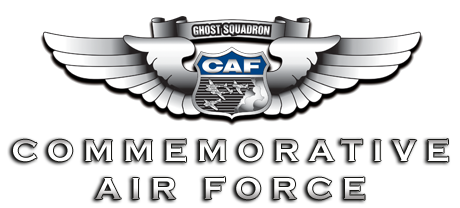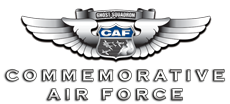Scrapped - Trainers and Fighters and Bombers, Oh My!
What America did with 295,959 WWII aircraft
By Anne Constantin Birge
In 1939, the United States produced less than 3,000 military aircraft. With America’s entry into World War II, every business possible joined the War Machine to build aircraft and other war materials. By the end of the War, America’s workers produced 295,959 aircraft ranging from bombers, fighters, reconnaissance, trainers, transports and communications aircraft. Of those, more than 65,160 were lost due to training accidents test flights, ferrying the aircraft to their destinations and in overseas operations.
Though many more were lost in battle, America’s military aircraft and her crews played a major in the victory over the Allies’ enemies in World War II. Then, peace descended upon the Earth. With a surplus of 150,000+/- airplanes, the U.S. government thought about storing them. In spite of the government enjoying spending money willy-nilly, they felt the cost to store them, in the event of a future need, at $20 per aircraft per month, was a bit exorbitant. Though aircraft left overseas were buried, bulldozed or sunk at sea, more about the environmental issues in another article, a huge number returned home to America for storage, sale of entire aircraft or parts and scrapping. Scrapping won that War.
The War Assets Administration (WAA) and the Reconstruction Finance Corporation (RFC), both governmental agencies, handled the storage, sales and scrapping of WWII aircraft. By summer 1945, the RFC had at least 30 sales-storage depots and 23 sales centers operating, with 117,210 aircraft transferred as surplus by November. Commercial airlines bought many DC-3s and C-54s to shore up their numbers of airliners. Others, like the transports and trainers were sold for civilian use or to our Allies. The trainers were sold for $875 to $2,400. Except for Warbird preservation, aviation museums and some later aerial firefighting uses, fighters and bombers were of little use. Of those sold, typical prices for surplus aircraft were:
- BT-13 Valiant $450
- P-38 Lightning $1,250
- AT-6 Texan $1,500
- A-26 Invader $2,000
- P-51 Mustang $3,500
- B-25 Mitchell $8,250
- B-17 Flying Fortress $13,750
- B-24 Liberator $13,750
Aside from the end of the war, a second cause for the obsolescence of World War II aircraft was due to the advent of the jet engine. Jet aircraft made WWII aircraft, such as P-38 Lightning fighters, B-17 Flying Fortress bombers and B-24 Liberator bombers, ‘archaic.’ Others, like the B-29 Superfortress bomber, the A-26 Invader bomber and the C-47 Skytrain transport were eligible for ‘strategic aircraft reserve’ status for possible return to duty. Communities or schools received some aircraft for free or even a minimal cost, like the North Carolina Boy Scout troop which bought a North American Aviation B-24 Liberator (SN 42-78770) for $350. It became known as the Gastonia Boy Scout Bomber. After changing hands a few times, it met a tragic fate when it nose-dived into the ground in Mexico in 1957. Should have been scrapped.
Obsolete aircraft assigned for short-term storage and disposal, were transferred to one of 28 storage locations, including eight large disposal facilities (also known as boneyards) at:
- Kingman Army Air Field, Arizona
- Walnut Ridge Army Air Field, Arkansas
- Ontario Cal-Aero Field, California
- Altus, Oklahoma
- Clinton Naval Air Station, Oklahoma
- Searcy Field, Oklahoma
- Albuquerque, New Mexico
- Victory Field, Texas
Thus began the era of the ‘salvage and melt’ method. After engines, armament, instruments, and radios were removed from each aircraft, the remainder was cut into pieces and pushed in a large furnace / smelter. Aluminum, the prime metal, was melted and poured into ingots for sale and shipping. In June 1946, the remaining aircraft, except those at Altus, were put up for scrap bids.
It’s estimated that 10,000 to 11,000 Warbirds were flown to Walnut Ridge in 1945 and 1946 for storage and sale. On January 27, 1949, the entire installation was conveyed to the city of Clinton, Oklahoma, with a clause that allowed the planes to be recaptured for use again by the US military. Then, the Sherman Iron Works rented space for the salvaging of more than 9,000 surplus military aircraft. By 1947, the WAA disposed of about 65,000 aircraft.
Aircraft needing longer storage, were shipped to Victorville Army Air Field (later renamed George AFB) in California, Pyote Army Air Field (because of the snake population, it’s often called ‘Rattlesnake Bomber Base’) in Texas and Warner Robins Army Air Depot (later renamed Warner Robins AFB) in Georgia. These locations were ideal for long-term storage so the aircraft wouldn’t be subject to mold, corrosion, rust, and inclement weather. By May 1946, more than 600 B-29 Superfortresses and 200 C-47 Skytrains were moved to Davis-Monthan AFB, Tucson, AZ. In addition, about 30 other aircraft destined for museums, were stored there, including the Enola Gay(SN 44-86292), the B-29 that dropped the atomic bomb named ‘Little Boy’ on Hiroshima, Japan on Aug. 6, 1945. When the Enola Gay’s pieces were finally put back together (by all the King’s men) and she was restored and resides at the National Air and Space Museum in Washington, DC. Also stored until her destination at the National Museum of the U. S. Air Force in Dayton, Ohio, was Bockscar (SN 44-27297). She’s the B-29 that dropped the atomic bomb ‘Fat Man’ on Nagasaki, Japan on Aug. 9, 1945.
Over the long-term, Davis-Monthan would become the only permanent storage and disposal facility for all branches of the U.S. military. The military, known for its overdramatic use of acronyms, outdid themselves with changing Davis-Monthan’s name (you may need pencil and paper to follow this.). Initially, it was called the Military Aircraft Storage and Disposal Center (MASDC) until the name was changed in October 1985 to the Aerospace Maintenance and Regeneration Center (AMARC). AMARC was officially re-designated May 2, 2007 as the 309th Aerospace Maintenance and Regeneration Group (AMARG), but it still uses the title AMARC for ‘worldwide recognition and legacy.’ Huh?
Thankfully, the founders of the Commemorative Air Force saw the handwriting on the wall and began purchasing Warbirds and World War II aircraft. Other groups soon followed suit. Today, hundreds of these aircraft are found in museums, being restored to airworthiness, or can be seen flying the skies with passengers who can truthfully say, “Trainers and fighters and bombers, OH MY!” This article was written by Anne Constantin Birge and orginally published in the CAF Southern California Wing Newsletter, which is edited by Dave Flood
This video was produced by the CAF Airpower Museum in 2011 for a temporary exhibit called Scrap. This video is an overview of Walnut Ridge AAF after World War II and the scraping of the airplanes.

